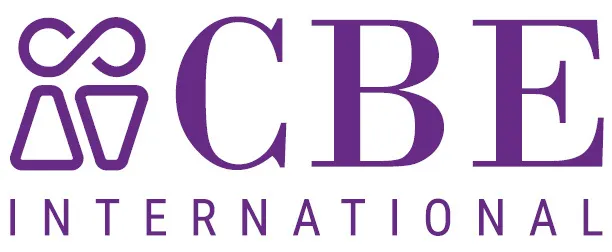Download a PDF version of this article.
The genealogies that make up the early chapters of the book of 1 Chronicles have generated curiosity and intrigue among Old Testament researchers due to the details, and sometimes the oddities, they contain. In them can be found not only a thorough description of family lines but also military censuses, geographical details, family anecdotes, and even a well-known prayer (1 Chr 4:9–10).1
This article’s objective is to study an obscure reference to a woman who is described as a builder of cities. Chapter 7 of the book of Chronicles contains, among other things, a list of Ephraim’s descendants, where his granddaughter Sheerah is mentioned (v. 24). The description of this woman is striking. Scripture credits her with having “built both Lower and Upper Beth-horon, and Uzzen-sheerah.” Ralph Klein correctly points out that “this is the only place in the Old Testament where a woman is named as the founder of a city.”2
Who was this pioneering woman that, in the midst of an ancient patriarchal culture, managed to build and rule three cities? Why does the book of Chronicles include a description of her when so many names in the genealogies are mentioned with no description at all? In this article, we will summarize what is possible to know about Sheerah and her architectural achievements. In addition, we will attempt to decipher the significance of her mention in the book of Chronicles.
In our first step we will see how her story is strategically placed among the genealogies of 1 Chronicles 7 to highlight her outstanding achievements as a builder of cities.
The Genealogies of 1 Chronicles 7
The first nine chapters of 1 Chronicles consist of a series of genealogies beginning with Adam and continuing through Jacob. In ch. 2, the description of the descendants of Judah begins (ch. 2, 4:1–23), including the royal line of David (ch. 3). Then it continues with the genealogies of Simeon (4:24–43), Reuben (5:1–10), Gad (5:11–17), Levi (ch. 6), Issachar (7:1–5), Benjamin (7:6–12, ch. 8), Naphtali (7:13), Manasseh (7:14–19), Ephraim (7:20–28), and Asher (7:30–40). Finally, in the ninth chapter, the Jews who returned from Babylon after the exile to reoccupy their lands are mentioned.
The description of the descendants of Ephraim, including Sheerah, is characterized by the lack of military censuses and the inclusion of colorful family anecdotes. Interestingly, this section of the genealogy has no parallel in similar OT passages.3 In fact, most of the names in these verses are never used again in the Bible.4
Sheerah is mentioned after a brief narrative about the circumstances that led to the birth of Beriah, Ephraim’s last son. She is described as his daughter (1 Chr 7:24), which technically could refer to either of these two men (such ambiguity is common in genealogies, since they are concisely expressed).5 However, since Beriah is the closest earlier referent, we are confident that Sheerah is his daughter and thus Ephraim’s granddaughter.6 This would make her the sister of Rephah (1 Chr 7:25), a man for whom, in contrast to Sheerah, no achievement is mentioned. In fact, no other descendant of Ephraim mentioned in this section is described as achieving anything. As interpreters, we should wonder whether the resulting emphasis on Sheerah is intentional.
It is likely that Sheerah’s story was placed here to directly contrast with her father’s and brother’s stories. Beriah’s birth came after Ephraim lost his two youngest sons in a fight after attempting to steal cattle from Canaanites (1 Chr 7:21–23). The name chosen for this child is the union of the preposition be (“in” or “with”) and the noun ra-ah (“calamity” or “misfortune”). Both the circumstances of his birth and the name he received point to a curse or divine punishment. In contrast, the fact that Sheerah has built cities in the promised land manifests divine blessing. Antje Labahn and Ehud Ben Zvi correctly point out that “building activities within Israel reflect divine blessing within the ideology of the book of Chronicles and accordingly, the readers of the book are asked to understand Sheerah’s actions as both a blessing and a reflection of a divine blessing.”7
In the same way, the fact that she had a brother shows that the construction of these cities was not a necessity due to a lack of male leadership. Rather, this achievement seems to be mentioned to highlight her achievements in the face of her brother’s lack of initiative or success. As Ben Zvi succinctly expresses, “the case of Sheerah is presented as even more remarkable, because she is not the only child of the head of the household. Her father has a son, and perhaps more than one, but she is the builder.”8
It is also striking that only two individuals in the genealogies that constitute the opening nine chapters of 1 Chronicles are portrayed as builders of cities. Besides Sheerah, 1 Chronicles 8:12 mentions a man named “Shemed, who built Ono and Lod with its towns.” Shemed built two cities (plus their surrounding villages), in contrast to the three cities built by Sheerah (which most certainly would also include some small villages around them, cf. 1 Chr 6:68 [6:53 in the Hebrew text and its Greek translation]). The close proximity of these references (7:24 and 8:12) also serves to emphasize Sheerah’s outstanding architectural achievement.
In addition, perhaps the role played by the cities built by Sheerah in the history of Israel is a clearer example of her remarkable talent and leadership capacity.
The Cities Built by Sheerah
Sheerah is credited with building three cities: Lower and Upper Beth-horon, and Uzzen-sheerah.
The first two settlements were neighboring cities, now known as Bet Ur et-Takhta and Bet Ur el-Foka, respectively.9 They were on the western side of the mountains of the region of Ephraim. The lower city was at the foot of the mountain, while the upper city was at a mountainous elevation. They were separated by approximately 2.5 kilometers (1.5 miles) and joined by a road that passed through them. This road was “the most important of all the routes in the hill country from the coastal plain.”10 In fact, numerous military confrontations have taken place in or near these cities throughout history due to their strategic location.
The famous battle between the forces of Israel led by Joshua against five Canaanite kings, in which God stopped the sun, occurred near Beth-horon (Josh 10:10–11). After the conquest of Canaan, the cities of Beth-horon were given to the tribe of Ephraim (Josh 16:3, 4; 18:13–14). Due to their favorable geographic location for transit, they were designated as cities of refuge (Josh 21:21–22).
It is clear that Sheerah was not the one who initially founded cities at these locations, since they had been previously inhabited by the Canaanites. However, after the conquest of Canaan, she took possession of these towns; she repaired, fortified, and enhanced them for habitation. The verb used in 1 Chronicles 7:24 to refer to the building of the three cities is banah, which is frequently used in the OT to refer to repairing and fortifying cities, even for building military fortresses (Judg 18:28; 1 Kgs 12:25, 15:17, 21, 22, 23, 16:24; 2 Kgs 14:22; 1 Chr 11:8; 2 Chr 11:5–6, 14:6–7, etc.).11
Controlling the cities of Beth-horon carried several substantial advantages. Being an important ancient route, it allowed Sheerah to protect the tribe of Ephraim from possible attacks from the east (as happened later, in Saul’s time, 1 Sam 13:17–18). In addition, because this was an important trade route, it guaranteed its ruler a constant source of income. It was also the easiest route to access the thriving seaports of Lebanon from the direction of Jerusalem and the prosperous Jordan Valley.12 The fact that Sheerah controlled this vital road undoubtedly secured for her an important social position among the leaders of her tribe. This may explain why she is mentioned so prominently in Ephraim’s genealogy.
Many years later, King Solomon also perceived the strategic importance of these sister cities and “built [banah] Upper Beth-horon and Lower Beth-horon, fortified cities, with walls, gates, and bars” (2 Chr 8:5; cf. 1 Kgs 9:17). If the man touted as wisest in the world (see 1 Kgs 4:29–34) imitates your actions, it is evident that you also are wise!
The third city that Sheerah built is Uzzen-sheerah. This designation is composed of the name of its founder and the Hebrew term uzzen, which is related to the Hebrew word for “ear.” The city name probably means something like “corner” or “small land plot.” It is possible that the name is related to the Hebrew term akhuzzan which has a technical meaning in the book of Chronicles, for it “designates the territory to be held inalienably in perpetuity by a tribe as its share in God’s land.”13 So the name of this town could mean something like “Sheerah’s small estate.” It is unknown where this place was located, although it is speculated that it could be the modern village of Beit Sira.14 It is likely that Sheerah did not name her third city herself, but it instead came to be known that way over time.
Conclusion
Although Sheerah is only mentioned once in the Bible, the brief description reveals much. She was an intelligent, farsighted, and capable woman. She perceived the strategic importance of these cities and worked hard to rebuild and fortify them. This woman soon controlled one of the most important routes in the region, the location of which was militarily, commercially, and logistically vital to the people of Israel. Her work in this regard surely granted her a high social status among the leaders of her tribe and guaranteed her a privileged place in Ephraim’s, and thus Jacob’s and Rachel’s, genealogy.
Her description in 1 Chronicles 7:24 was carefully placed to contrast with those of her father and brother. The divine blessing manifested in her construction of cities in the promised land contrasts with the tragic circumstances of the birth of her father, as well as the lack of successes and initiatives of her brother. There is also probably a contrast to the Shemed of 1 Chronicles 8, who built two cities in the land of Benjamin. All this emphasizes the importance of her architectural achievements.
Although little is known about Sheerah, the Bible portrays her as a talented leader who achieved remarkable successes with the help of divine blessing. As such, she should move from being an obscure figure in the OT to becoming a role model for women, and for men as well, today.
Notes
1. 1 Chr 4:9–10 increased in popularity with the publication of Bruce Wilkinson’s The Prayer of Jabez: Breaking Through to the Blessed Life (Multnomah, 2000). The passage reads, “Jabez was honored more than his brothers; and his mother named him Jabez, saying, ‘Because I bore him in pain.’ Jabez called on the God of Israel, saying, ‘Oh that you would bless me and enlarge my border [NRSVue “territory”], and that your hand might be with me, and that you would keep me from hurt and harm!’ And God granted what he asked.” Unless otherwise indicated, all Bible quotations in this article have been taken from the 1989 New Revised Standard Version and remain essentially unchanged in the 2021 NRSVue.
2. Ralph W. Klein, 1 Chronicles: A Commentary, Hermeneia (Fortress, 2006) 234, emphasis added.
3. See John C. Endres, William R. Millar, and John Barclay Burns, eds., Chronicles and Its Synoptic Parallels in Samuel, Kings, and Related Biblical Texts (Liturgical, 1998) 38.
4. William Johnstone, 1 & 2 Chronicles, 2 vols., JSOTSup 253 (Sheffield Academic, 1997) 1:107. The source from which the Chronicler obtained the information he presents here is unknown; see Steven J. Schweitzer, “Judging a Book by Its Citations: Sources and Authority in Chronicles,” in What was Authoritative for Chronicles?, ed. Ehud Ben Zvi and Diana V. Edelman (Eisenbrauns, 2011) 48. The source is likely a now-lost historical account of the Ephraimitic clans; see Nadav Na’aman, “Sources and Redaction in the Chronicler’s Genealogies of Asher and Ephraim,” JSOT 16/49 (1991) 108.
5. James T. Sparks, The Chronicler’s Genealogies: Towards an Understanding of 1 Chronicles 1–9 (Society of Biblical Literature, 2008) 197–98.
6. The ambiguity can be seen by comparing translations. Some, such as the 2015 Amplified Bible, supply Beriah’s name at the beginning of 7:24, making explicit that he was Sheerah’s father. Other translations, such as the 1995 Contemporary English Version, instead supply Ephraim’s name. Most translations retain the Hebrew text’s lack of a personal name and simply read, “His daughter was Sheerah. . . .”
7. Antje Labahn and Ehud Ben Zvi, “Observations on Women in the Genealogies of 1 Chronicles 1–9,” Bib 84/4 (2003) 475.
8. Ehud Ben Zvi, History, Literature and Theology in the Book of Chronicles (Equinox, 2006) 185.
9. John L. Petersen, “Beth-Horon,” ABD 1:688.
10. Petersen, “Beth-Horon,” 1:688.
11. See S. Wagner, “bānāh [bānâ],” TDOT 2:169.
12. David A. Dorsey, The Roads and Highways of Ancient Israel (Johns Hopkins University Press, 1991) 183–84.
13. Johnstone, 1 & 2 Chronicles, 1:108–9.
14. Simon J. de Vries, 1 and 2 Chronicles, FOTL 11 (Eerdmans, 1989) 80.





